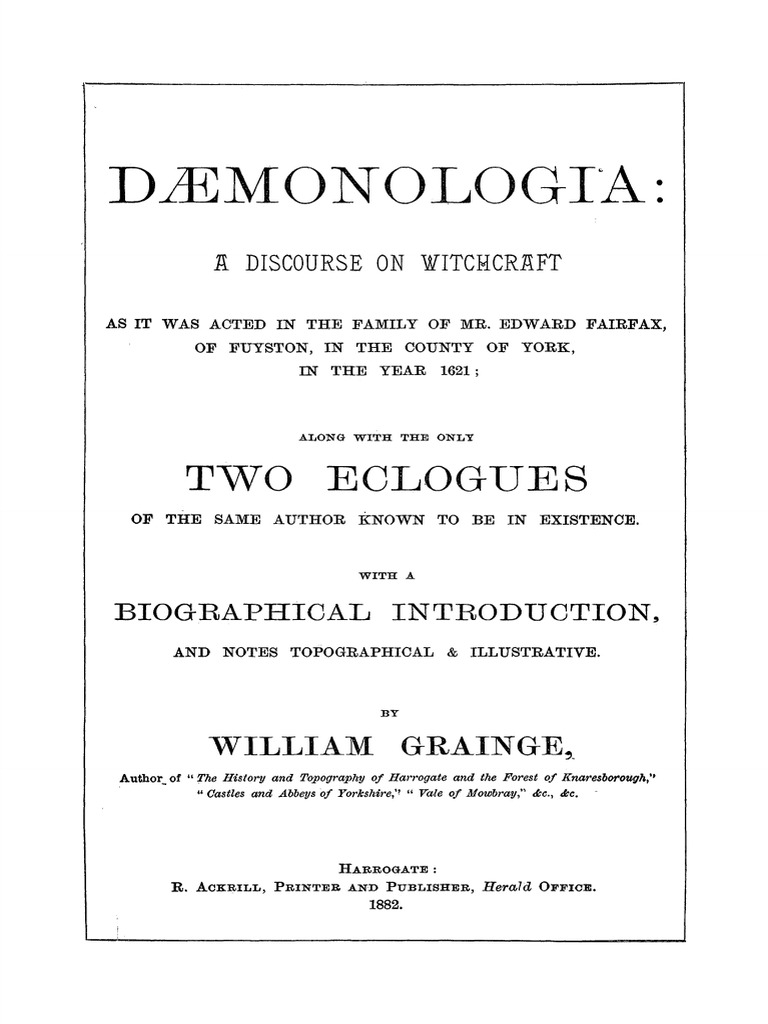Inges’s tale of witchcraft, revenge and murder might seem a little far-fetched, but the inspiration for it came from a tale that was even more unlikely: not only for what happened, but for who told it.
Edward Fairfax, a now obscure but once celebrated Elizabethan translator and poet, wrote his version at New Hall, in Fewston, Yorkshire, during the reign of James I.
His slightly bonkers Daemonologia: A Discourse on Witchcraft as it was Acted in the Family of Mr. Edward Fairfax of Fuystone set out his case against the ‘witches’ and their pets who had cursed his family:
- Peg Waite and her imp ‘a white cat spotted with black and called Inges’
- Margaret Waite and her imp ‘a deformed thing with many feet, black of colour, rough with hair, the bigness of a cat, the name of it unknown’
- Jennit Dibble and her imp ‘in the shape of a great black cat called Gibbe, which hath attended her now above 40 years’
- Margaret Thorpe and her imp ‘in the shape of a bird, yellow in colour, about the bigness of a crow – the name of it is Tewhit’
- Elizabeth Fletcher
- Elizabeth Dickenson
The fact that Fairfax – one of the most highly educated men in England at the time – so firmly believed in the reality of witchcraft is a frightening example of just how deeply set into society the witch hysteria of the age was.
All the accused were what was known as ‘cunning women’ – village women, often widowed, and experienced in traditional medicine. The making of potions and spells was commonplace in rural England at the time- but could easily be used against someone who didn’t fit in, or rubbed the wrong person up the wrong way. It was a truly dangerous time for anyone who didn’t conform to the role expected of them – particularly if they were a woman.
Remarkably, despite being poor village women accused by one of the greatest names in their parish, all six were acquitted, not once but twice. Although Inges tells it somewhat differently, this was in large part down to the work of the local vicar Nicholas Smythson, who successfully petitioned for the women’s release with the support of many of his parishioners.
Fairfax’s case probably wasn’t helped by his rambling diatribe which accused the witches of various unlikely evil acts – from sending their cats to breathe spells into his children’s mouths, to causing people’s limbs to fall off. In one case, a local man’s foot is removed with a spell, only to appear back on his leg the next time he’s mentioned.
Even after the women were acquitted twice, Fairfax continued to accuse them – as far as anyone knows he never changed his mind.
The Daemonologia is one of the most extensive contemporary records of the ‘witch mania’ of James I’s reign – and not only gives an insight into the historical hysteria, but also shows some fascinating glimpses of rural life in a quiet part of Yorkshire in the 1620s.

